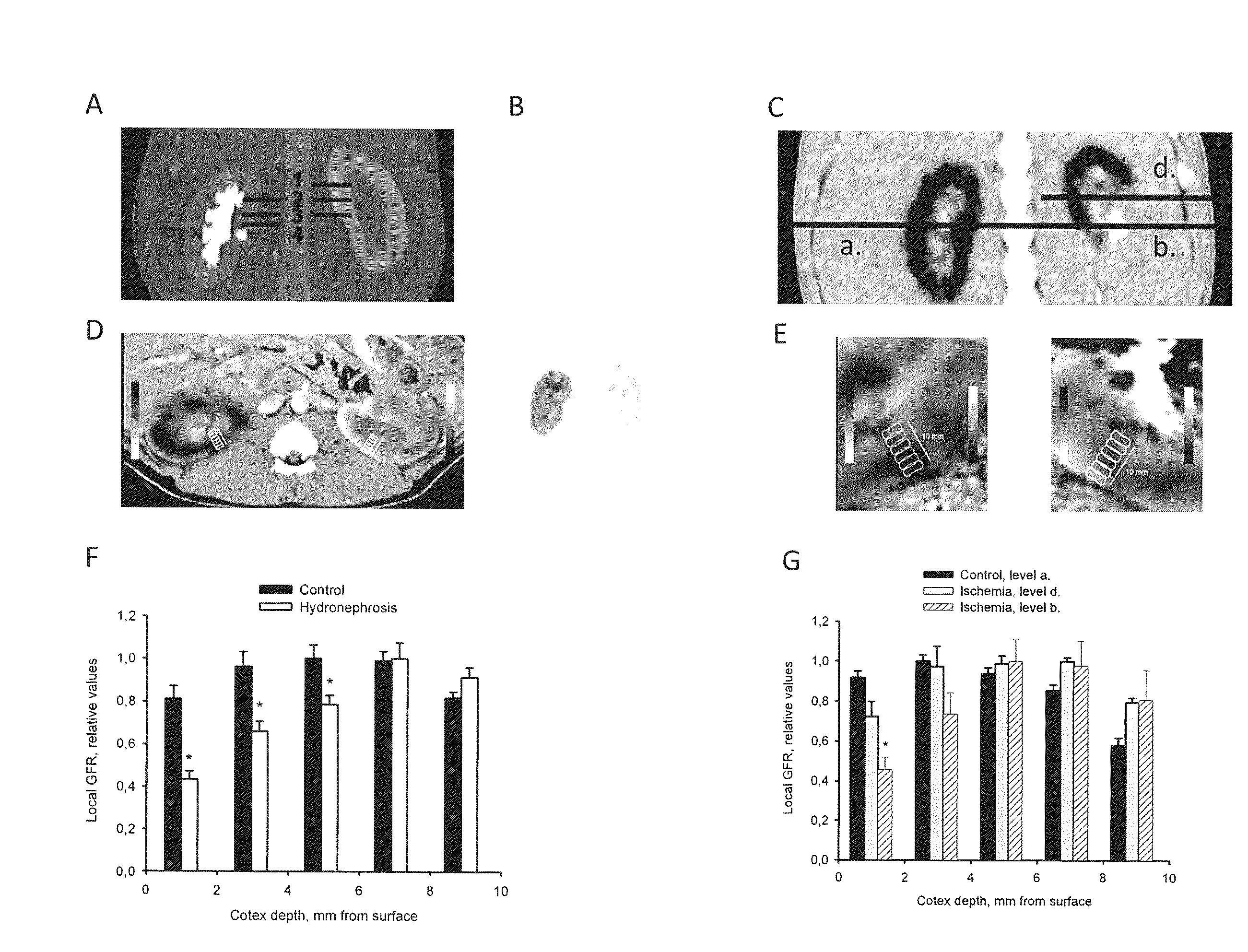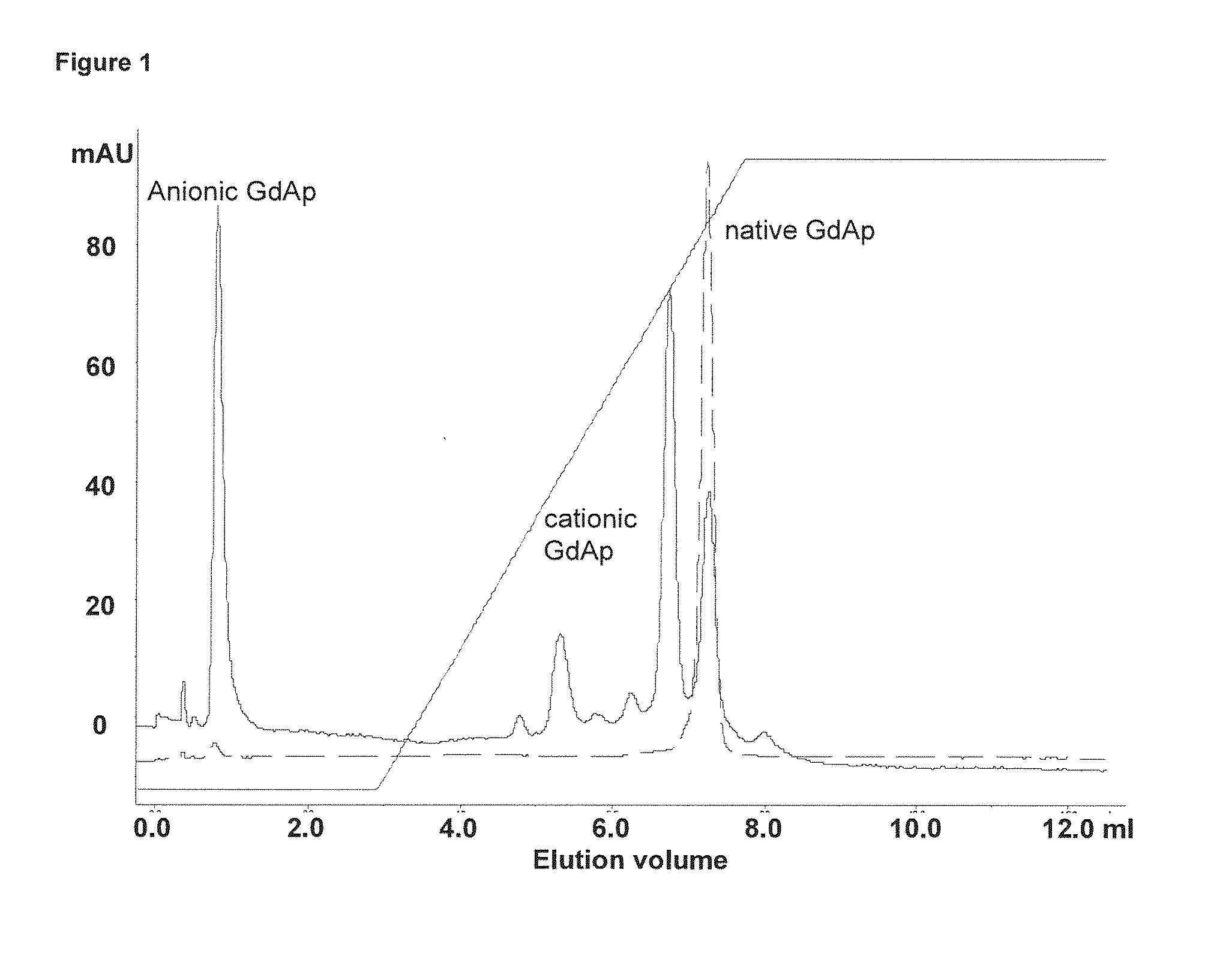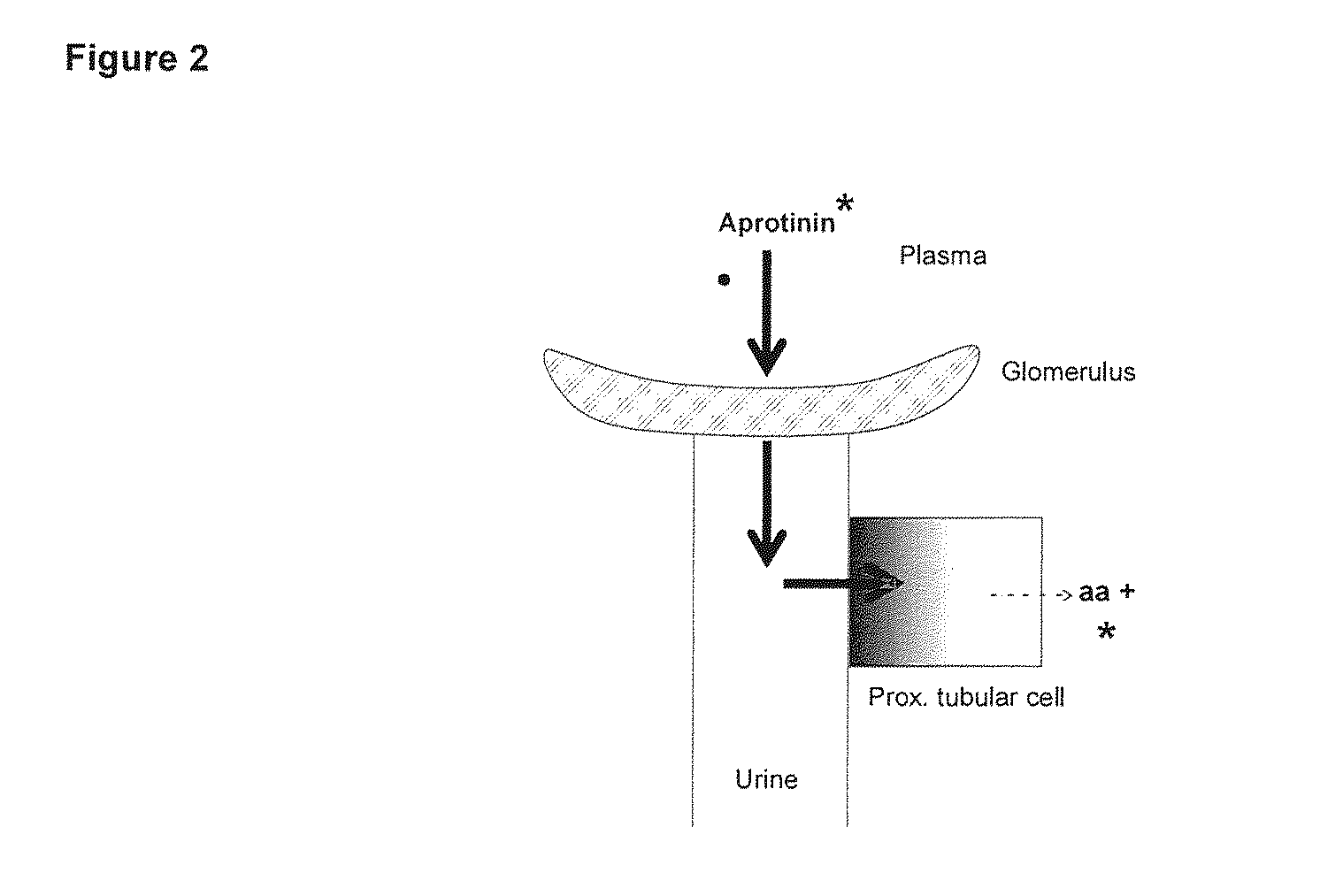Biomolecule complexes as contrast agents in positron emission tomography (PET) based methods for the assessment of organ function
a biomolecule complex and positron emission tomography technology, applied in the field of biomolecule complexes as contrast agents in positron emission tomography (pet) based methods for the assessment of organ function, can solve the problems of renal failure and subsequent decrease of glomerular filtration rate (gfr), affecting all organ systems, electrolyte and endocrine disturbance, hypertension, etc., and achieve low accumulation of targeting protein in the kidney
- Summary
- Abstract
- Description
- Claims
- Application Information
AI Technical Summary
Benefits of technology
Problems solved by technology
Method used
Image
Examples
example 1
Gd-DTPA-Aprotinin Protocol
Materials:
[0506]DTPA (Diethylenetriaminepentaacetic acid dianhydride, Sigma D-6148, C14H19N3O8, molecular weight 357.32).[0507]aprotinin from bovine lung, Sigma A4529 lyophilized powder, 3-7 TIU / mg solid, molecular weight 6511.44).[0508]HEPES (Sigma, H7523, 4-(2-Hydroxyethyl)piperazine-1-ethanesulfonic acid, C8H18N2O4S, molecular weight 238.30).[0509]Citric acid (Sigma C0759, HOC(COOH)(CH2COOH)2 molecular weight 192.12).[0510]Citrate tribasic dehydrate (Sigma S4641, HOC(COONa)(CH2COONa)2.2H2O, molecular weight 294.10).[0511]DMSO (Sigma Dimethyl sulfoxide, D8418, (CH3)2SO, molecular weight 78.13).[0512]Dialysis Membrane (Spectra / Por 3 Tubing: 3.5 k MWCO Regenerated Cellulose, Cat. No.: 132720).[0513]NTA, (Sigma, N0128, Nitrilotriacetic acid disodium salt, C6H7NO6Na2, molecular weight 235.10[0514]GdCl3 (MP Biomedicals Cat. No.: 203712, gadolinium chloride, Cl3GdH12O6, molecular weight: 371.7).[0515]Gadolinium-153 Radionuclide in 0.5N HCl (PerkinElmer NEZ14200...
example 2
Gd-DTPA-Lysozyme Protocol
Materials:
[0528]DTPA (Diethylenetriaminepentaacetic acid dianhydride, Sigma D-6148, C14H19N3O8, molecular weight 357.32).[0529]Lysozyme from chicken egg white, Sigma L6876, lyophilized powder, molecular weight 14.7 kDa.[0530]HEPES (Sigma, H7523, 4-(2-Hydroxyethyl)piperazine-1-ethanesulfonic acid, C8H18N2O4S, molecular weight 238.30).[0531]Citric acid (Sigma C0759, HOC(COOH)(CH2COOH)2 molecular weight 192.12).[0532]Citrate tribasic dehydrate (Sigma S4641, HOC(COONa)(CH2COONa)2.2H2O, molecular weight 294.10).[0533]DMSO (Sigma Dimethyl sulfoxide, D8418, (CH3)2SO, molecular weight 78.13).[0534]Dialysis Membrane (Spectra / Por 3 Tubing: 3.5 k MWCO Regenerated Cellulose, Cat. No.: 132720).[0535]NTA, (Sigma, N0128, Nitrilotriacetic acid disodium salt, C6H7NO6Na2, molecular weight 235.10[0536]GdCl3 (MP Biomedicals Cat. No.: 203712, gadolinium chloride, Cl3GdH12O6, molecular weight: 371.7).[0537]Gadolinium-153 Radionuclide in 0.5N HCl (PerkinElmer NEZ142001MC)
Day 1: Pr...
example 3
Study of Glomerular Filtration Rate in a Patient
[0550]In one example, provided in order to illustrate and not to limit, a complex comprising aprotinin linked to a PET marker is administered intravenously to a patient and PET imaging performed. Imaging visualises the glomerular filtration rate of said patient. Subsequently, a complex comprising lysozyme linked to a paramagnetic marker is administered intravenously to the same patient and PET imaging performed. The images acquired in the two scans are compared. Deficient uptake of complex comprising a lysozyme derivative (tubular injury inhibits absorption of this complex) in the absence of deficiency of the complex comprising aprotinin (absorbed even by injured tubules) indicates damage (e.g. after acute ischemia) locally to tubuli which has not yet resulted in lowered glomerular filtration rate.
PUM
| Property | Measurement | Unit |
|---|---|---|
| pH | aaaaa | aaaaa |
| height | aaaaa | aaaaa |
| molecular weight | aaaaa | aaaaa |
Abstract
Description
Claims
Application Information
 Login to View More
Login to View More - R&D
- Intellectual Property
- Life Sciences
- Materials
- Tech Scout
- Unparalleled Data Quality
- Higher Quality Content
- 60% Fewer Hallucinations
Browse by: Latest US Patents, China's latest patents, Technical Efficacy Thesaurus, Application Domain, Technology Topic, Popular Technical Reports.
© 2025 PatSnap. All rights reserved.Legal|Privacy policy|Modern Slavery Act Transparency Statement|Sitemap|About US| Contact US: help@patsnap.com



